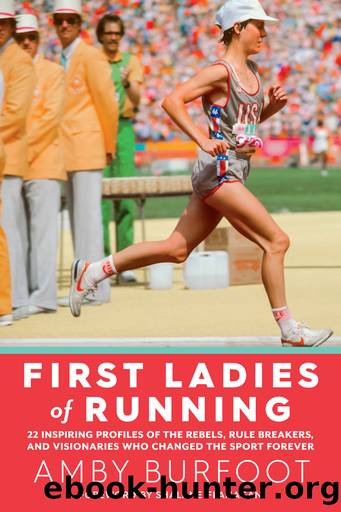First Ladies of Running by Amby Burfoot

Author:Amby Burfoot
Language: eng
Format: epub
Publisher: Harmony/Rodale
Published: 2016-02-15T00:00:00+00:00
The next year, 1970, Cheryl moved to San Luis Obispo, California, where Larry Bridges, then her husband, earned a coaching job at California Polytechnic State University. Cheryl also worked all day as a public school physical education teacher, and she began to wonder if her serious running days had come to an end. After all, she was 23 nowâold by her terms. It seemed the appropriate time to step aside and let younger girls take her place. Few women ran distance races at all, and virtually none continued racing after their high-school and college days.
It was the time to start nestingâto settle down into the role of the good wife. On the other hand, the California weather was intoxicating to her. âAfter the often-depressing weather back in the Midwest, especially the winters, I felt like a kid in a candy store when I got to California,â Cheryl recalls. âWe could train year-round, and there were many more racing opportunities than I was accustomed to.â
Instead of quitting, she fell into training with the men on her husbandâs cross-country team at Cal Poly. âIt took my body several years to catch up with the training, but they were such a supportive group,â she says. âWe understood each other. We were going through the same ups and downs. Gradually, I got fitter and fitter.â
After cross-country season, many of the central California runners headed to Los Angeles for the annual Western Hemisphere Marathon in Culver City. In December 1970, Cheryl joined them. Everyone thought the end-of-year timing was perfect. If you needed a long recovery after the marathon, no problem. âI was already doing longer weekend runs with the guys,â she remembers. âWe called it âThe Church of the Sunday Runâ because we saw so many other people going to church while we were running. I often think we got closer to God on our runs than they did in church. Anyway, I was always up for another challenge, so when we began discussing the marathon, I thought, âWhy not? Itâs just one more wild-and-crazy thing to do.ââ
That seemed to be Cherylâs specialtyâtackling new events, even when she knew little about the challenges. Cheryl cruised through the first 10 miles in 58 minutesâway too fast. At 15 miles, she still felt okay. But as she approached 20 miles? Not so much. âEverything quit working at that point,â she says. âIt was a death march. I didnât want to walk, but if I hadnât done some walking, I probably would not have finished.â
She had to slow and walk a few times, but she finished. Not only that, she ended up being the top female finisher in her first marathon, in 3:14:45. Best of all, she knew she could run much faster. âI realized almost right away that I would want to run another marathon,â she says, âbecause I knew I could run better with smarter pacing.â
The next year, she recruited a new coach, Bill Dellinger, from the University of Oregon. He admitted that he had
Download
This site does not store any files on its server. We only index and link to content provided by other sites. Please contact the content providers to delete copyright contents if any and email us, we'll remove relevant links or contents immediately.
Unstoppable by Maria Sharapova(3123)
The Inner Game of Tennis by W. Timothy Gallwey(2999)
Urban Outlaw by Magnus Walker(2951)
Crazy Is My Superpower by A.J. Mendez Brooks(2866)
The Social Psychology of Inequality by Unknown(2316)
The Fight by Norman Mailer(2160)
Unstoppable: My Life So Far by Maria Sharapova(2131)
Going Long by Editors of Runner's World(1925)
Accepted by Pat Patterson(1919)
Motorcycle Man by Kristen Ashley(1866)
The Happy Runner by David Roche(1829)
The Sports Gene: Inside the Science of Extraordinary Athletic Performance by David Epstein(1825)
Backpacker the Complete Guide to Backpacking by Backpacker Magazine(1821)
Futebol by Alex Bellos(1802)
Sea Survival Handbook by Keith Colwell(1797)
Mind Fuck by Manna Francis(1752)
Peak: Secrets from the New Science of Expertise by Anders Ericsson & Robert Pool(1664)
Endure by Alex Hutchinson(1611)
The Call of Everest by Conrad Anker(1553)
